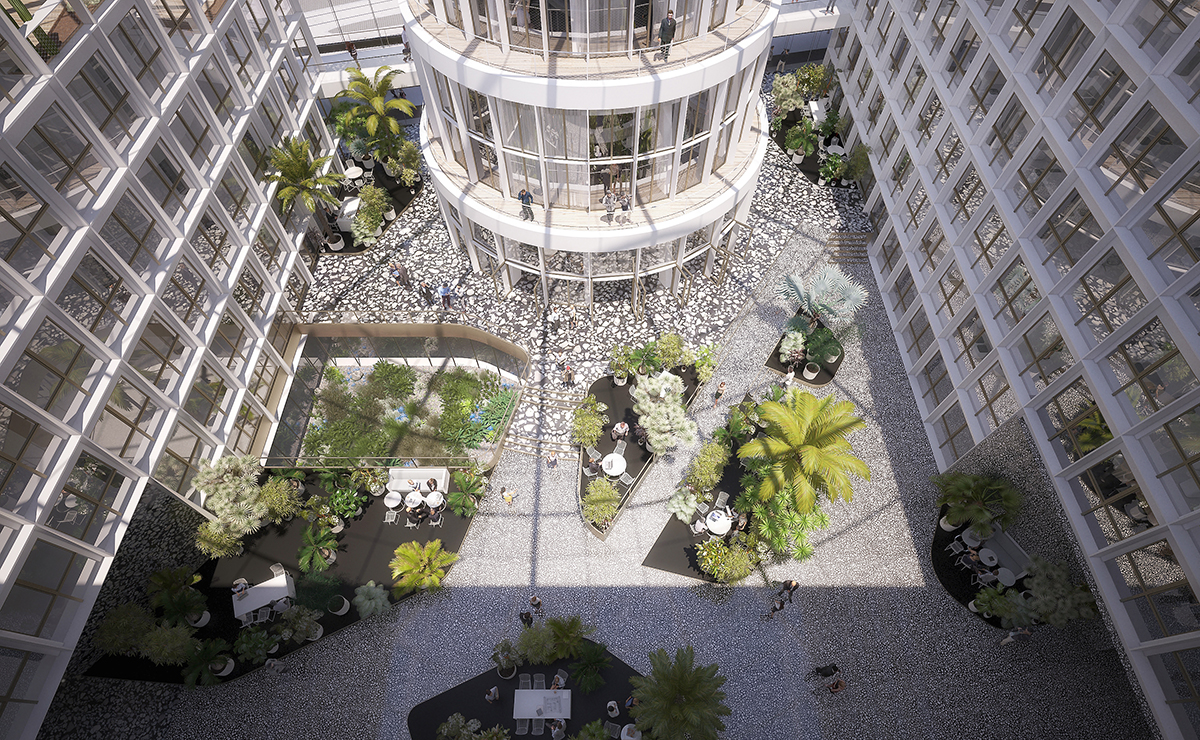“The mass-production of rubble constitutes one of modern architecture’s main legacies,” said the French designer and researcher Anna Saint Pierre. So much of what gets built gets demolished, or decays and needs to be restored or renovated. She explained that “The building sector accounts for 50 percent of natural resource consumption and almost 40 percent of waste production within European territories.” To help combat this waste she’s developed a new technique of in-situ recycling called Granito.
The concept is to “quarry” materials on-site, taking stone from surrounding demolished structures and pulverizing it for use in new aggregates—by reusing these materials on location there’s no need for transportation. An architect at the French firm SCAU, Saint Pierre is putting Granito to the test on one of the office’s Paris projects. Saint Pierre’s proposal is to take 182 tons of unwanted granite panels from the extant structure, an office block also designed by the firm and opened in 1997 as the headquarters of Télédiffusion de France, and grind, sort, and reincorporate the material into terrazzo floors for the new building, a co-working space. Saint Pierre says that the granite and terrazzo floors, visible from the street, will act as “a fifth facade.” In addition to working to create terrazzo, she’s also been using in-situ recycling to create gabion walls, including for a future housing project. Since announcing Granito earlier this year, Saint Pierre has worked to tweak the process to become more energy efficient.

“This project highlights the impact that the ever-shortening life of tertiary real estate programs has on the life and death cycle of the materials used,” Saint Pierre said. In this manner, Granito is not just a practical solution, but also a commentary on issues of architectural preservation. “Granito investigates new modes of memory transmission through [the] in-situ transformation of rubble,” she explains. “It’s an alternative to both ‘tabula rasa’ approaches or strict restoration.” Granito, “investigates site-specific loops of remembrance,” and understanding just what “in situ” might mean in this context is key to understanding the purpose of Granito. It’s about “the existing site, its memory, and its mutation.”
